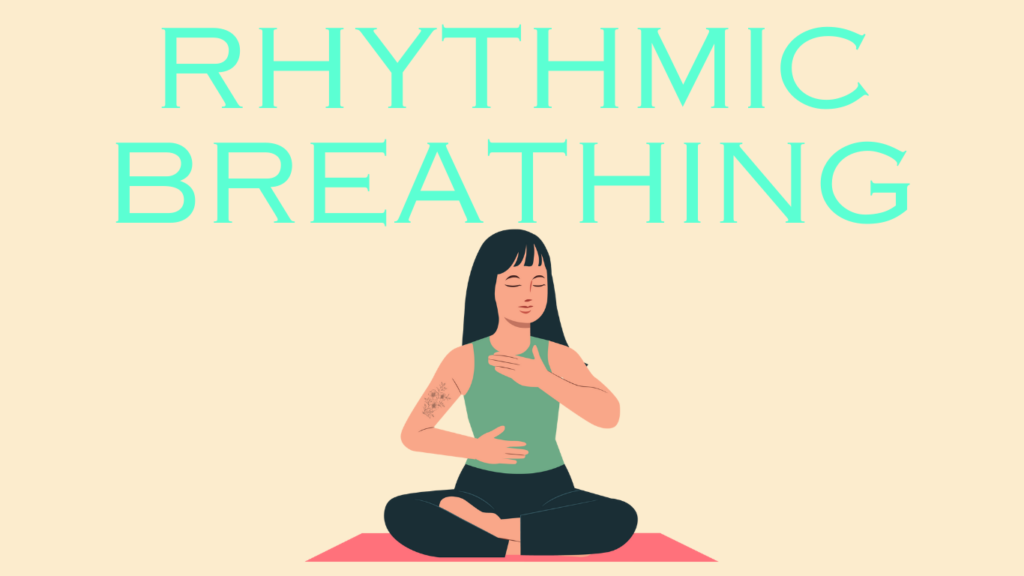Rhythmic Breathing: The Key to Harmony and Well-being

Breathing is an automatic process, something we do without thinking. Yet, how we breathe can significantly impact our mental, physical, and emotional well-being.
Rhythmic breathing, a controlled and intentional breathing technique, has been practiced for centuries in various cultures and disciplines, including yoga, meditation, and athletic training. By harnessing the power of rhythmic breathing, we can improve focus, reduce stress, and enhance overall health.
Table of Contents
What Is Rhythmic Breathing?
Rhythmic breathing involves inhaling and exhaling in a structured pattern, synchronizing the breath with movement or mental focus. This technique helps regulate the autonomic nervous system, promoting relaxation and reducing the fight-or-flight response.
Diaphragmatic breathing, which engages the diaphragm rather than chest muscles, increases lung capacity and oxygen intake, enhancing running performance and overall well-being.
Popular rhythmic breathing techniques include:
- Box Breathing (4-4-4-4): Inhale for four counts, hold for four, exhale for four, and pause for four before repeating.
- 4-7-8 Breathing: Inhale for four counts, hold for seven, and exhale for eight. This method is known for inducing calmness and aiding sleep.
- 1:2 Breathing Ratio: Exhaling for twice the duration of inhaling to promote relaxation and stress relief.
- Cadence Breathing for Athletes: Matching breath to strides or strokes in running or swimming to enhance endurance and efficiency.
Mastering various breathing techniques is crucial for optimal performance and emotional regulation.
Definition and Basics
Rhythmic breathing is a technique that involves coordinating breathing patterns with physical movements, such as running or swimming, to improve performance, reduce fatigue, and enhance overall well-being. This technique is based on the idea that the body’s natural breathing rhythm can be synchronized with the movement of the body to create a more efficient and effective way of breathing.
When you align your breath with your movements, you create a harmonious flow that can make physical activities feel more effortless. For instance, runners often synchronize their breath with their foot strikes, inhaling for a set number of steps and exhaling for another set.
This not only helps in maintaining a steady pace but also reduces the risk of side stitches and other discomforts.
Similarly, swimmers can match their breathing to their strokes, ensuring they get enough oxygen without disrupting their rhythm. By practicing rhythmic breathing, you can enhance your lung health, boost your endurance, and make your workouts more enjoyable and effective.
Benefits of Rhythmic Breathing
Practicing rhythmic breathing consistently can lead to numerous benefits:
Rhythmic breathing is an essential skill for both physical performance and emotional regulation.
1. Reduces Stress and Anxiety by Calming the Sympathetic Nervous System
By engaging in controlled breathing, we activate the parasympathetic nervous system, which helps lower cortisol levels and alleviate anxiety. Rapid chest breathing can activate the sympathetic nervous system, leading to increased stress by heightening heartbeat and muscle tension.
Rhythmic breathing provides an immediate sense of calm, making it an effective tool for stress management.
2. Enhances Focus and Mental Clarity
A steady breathing rhythm increases oxygen flow to the brain, improving cognitive function, concentration, and decision-making abilities. This is why many mindfulness and meditation practices emphasize breath control.
3. Boosts Physical Performance by Increasing Lung Capacity
Athletes use rhythmic breathing to optimize oxygen intake, prevent side stitches, and maintain endurance. Belly breathing is crucial for maximizing oxygen intake and stabilizing the core. By synchronizing breath with movement, they reduce energy waste and enhance performance.
The force of impact upon landing can be two to three times a runner’s body weight, making it essential to time foot hits with the breathing cycle to prevent injuries. Consistently landing on the same foot during exhalation increases the risk of injury, so alternating foot strikes is important to distribute impact forces evenly and enhance stability.
4. Improves Sleep Quality
Techniques like the 4-7-8 breathing method are particularly effective for individuals struggling with insomnia or restlessness. Slow, deep breathing signals the body to relax, making it easier to fall asleep.
5. Supports Cardiovascular and Respiratory Health with Diaphragmatic Breathing
Deep, controlled breathing strengthens lung capacity, lowers blood pressure, and improves heart rate variability. Diaphragmatic breathing engages the diaphragm to increase lung capacity and oxygen intake. This contributes to better overall cardiovascular health.
The Science Behind Rhythmic Breathing
Rhythmic breathing works by engaging the diaphragm, the primary muscle used for breathing, to take in oxygen and expel carbon dioxide. When the diaphragm contracts, it allows the lungs to fill with air, and when it relaxes, it allows the lungs to deflate. By synchronizing the contraction and relaxation of the diaphragm with the movement of the body, rhythmic breathing can help to improve lung capacity, reduce blood pressure, and promote a healthy lifestyle.
The science behind rhythmic breathing is rooted in the concept of the breathing cycle, which consists of two phases: inhalation and exhalation. During inhalation, the diaphragm contracts, and the lungs fill with air. During exhalation, the diaphragm relaxes, and the lungs deflate.
By synchronizing the breathing cycle with the movement of the body, rhythmic breathing can help to improve the efficiency of the respiratory system and promote overall health and well-being.
In addition to improving lung capacity and reducing blood pressure, rhythmic breathing can also help to reduce stress and anxiety by engaging the parasympathetic nervous system, which promotes relaxation and calmness. This can be especially beneficial for individuals who experience anxiety or stress related to breathing, such as those with respiratory conditions like asthma or COPD.
To practice rhythmic breathing, individuals can start by focusing on their natural breathing pattern and then synchronizing it with their movement. For example, a runner can practice inhaling for two steps and exhaling for two steps, while a swimmer can practice inhaling during the recovery phase of their stroke and exhaling during the propulsion phase. By practicing rhythmic breathing regularly, individuals can improve their lung capacity, reduce fatigue, and enhance their overall performance.
Rhythmic breathing is a powerful technique that can help to improve lung capacity, reduce blood pressure, and promote a healthy lifestyle. By understanding the science behind rhythmic breathing and practicing it regularly, individuals can take control of their breathing and improve their overall health and well-being.
How to Incorporate Rhythmic Breathing Techniques into Daily Life
Implementing rhythmic breathing doesn’t require drastic lifestyle changes. Here are some simple ways to integrate it into your routine:
- Morning Routine: Start your day with a 5-minute rhythmic breathing session to set a positive tone.
- During Work: Take short breathing breaks to reduce stress and maintain productivity.
- Exercise: Sync breath with movement to enhance efficiency and endurance.
- Before Sleep: Practice a calming breathing pattern to unwind and prepare for restful sleep.
Conclusion
Rhythmic breathing is a simple yet powerful technique that can transform your well-being. By making mindful breathing a habit, you can cultivate a calmer mind, a healthier body, and a more balanced life. Whether you’re looking to improve performance, reduce stress, or sleep better, rhythmic breathing offers a natural and accessible solution.
So take a deep breath, find your rhythm, and breathe your way to better health!

